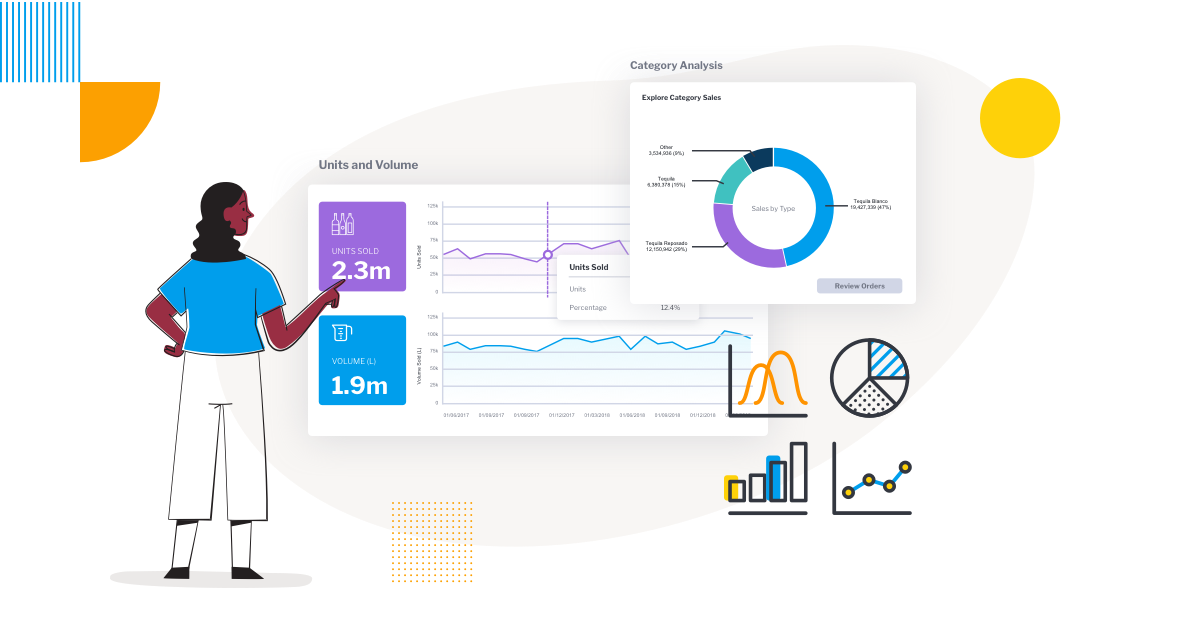Many people consider data-driven culture exclusively as one that comprises a large data team (analysts, data scientists), perfect data-sets neatly organized in a structured data warehouse, and the perfect tools to both access and utilize data in every decision made.
Ultimately, however, much of data-driven culture comes down to a clear focus on the end-goal. Many people forget data is just an implementation, something that helps us in what we do. Realizing a data-driven culture should look at other key areas of importance:
- Leadership of the organization from the top should really be looked to and proactively talking about ‘what’ the business is trying to achieve with data in the first place
- The wider business has to be able to understand and then articulate ‘why’ data is so important and why it is used to realize both company-wide and individual objectives
- Understanding where current gaps are can then lead to building infrastructure and processes and getting the right people and data-sets to help understand the ‘how’
These considerations are seen as crucial to the essence of achieving a data-driven culture, and the panel had some very interesting discussion around each speaker’s personal experiences - we recommend watching the full webcast for a deeper dive into a typically complex topic, along with more on-demand content from the summit here.
Common challenges of trying to use data for decision-making
Regardless of industry or department, it seems for many product teams, wrangling data to inform-decision making is still regarded as a big challenge for many organizations today. Many different issues were brought up during the panel discussion, including:
Complex data: Many businesses remain unsure what to do with all of their data, or understand how data is managed at the top of the company. There are ongoing challenges to make sense of data and simplify it within business conversations to stop bias and guesswork, which will require stakeholders who know the business and the market to have more proactive involvement.
Incoming data: The nature of the digital era and big data means there’s so much data coming into the average business that many drown in it or still face difficulties in establishing a proper preparation process and stakeholder who manages the flow - not just product teams.
Missed data: There’s a misconception that data is only analytics, despite it coming from numerous other sources such as web research and qualitative data. Businesses need to find the best, most relevant sources to make fully informed decisions, and it’s an area of education that can’t be overlooked in the journey toward realizing a data-driven culture.
Misunderstood data: How do you make data impactful? It’s a question that different personality types interpret in different ways, and product leaders especially need to work on knowing their audiences and adjusting for it when trying to foster a data-driven workplace through education and building out the analytical capabilities of future apps.
What organizations get wrong when trying to foster data-driven cultures
From feeling overwhelmed to bringing product principles into data teams, the panel touched on three common mistakes made by leaders trying to do better with their data.
1. Many organizations delay their analytics implementation out of a desire to clean up their data and have all the tools and teachings first. It’s easy to aim for perfection, but ultimately these are implementation details that are rarely done perfect in one step. It’s better to think about problems to solve using data and letting that data guide the journey. Decent data that helps the business is better than perfect data nobody needs.
2. Trying to use data for decisions where qualitative input is more valuable is another common pain-point. There are many dimensions to business data that must be examined before relying solely on the numbers, and there several other types of analytical tools, including data storytelling and contextual analytics, that help users look at their data and the valuable context behind it, and springboard data-driven practices from there.
3. Not updating data points and assumptions frequently enough is one area product leaders need to look more into. The best decisions are a blend of data, qualitative feedback and intuition.
The shared sentiment among the panel was that line-of-business users today need to have better access to build dashboards and look at data, and that product leaders need to more proactively use data to support their users and their skill sets more consistently.
Read more: How to build a data culture through data storytelling
Recommendations for product leaders: What should you consider?

According to the panelists, product leaders must lead by example. Make a commitment to being data-driven in decision-making, rather than relying on intuition or gut-feeling.
Using your experiences, but not getting too locked into it, and balancing sources of new insights with your expertise and hard data is a practice better started and established sooner rather than later, to achieve success.
What comprises a good argument for a data-driven culture are product leaders who marry insights with qualitative data to make a good story. Showing what success looks like and what is needed to properly measure it in a structured data story is a great way to take your executives on a journey.
Pick a specific area in the business to look at the detail underneath the bigger business metrics, and pilot it with a business unit. Change is hard, but not if you spend the time to prepare and educate.
Whitepaper: How to Cultivate a Data Culture for Analytics Success
Find out how to create a data-driven culture in this short eBook, which includes five key steps to realizing data culture success today.

